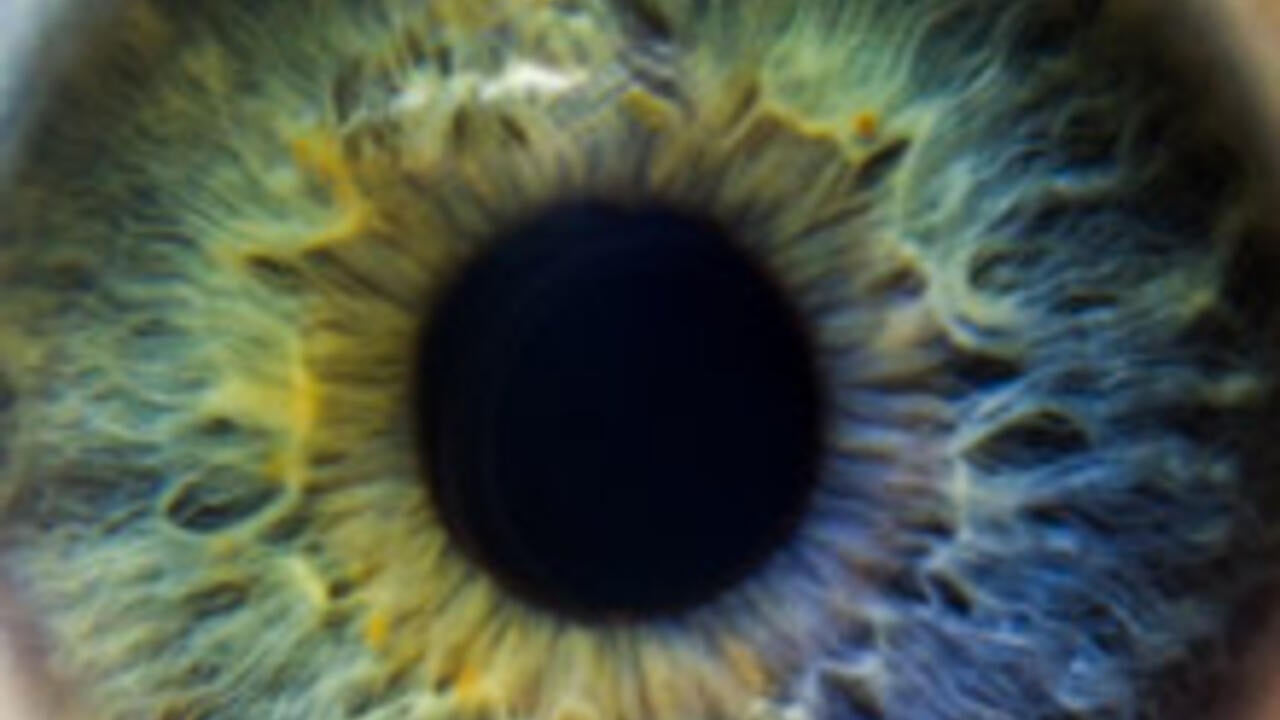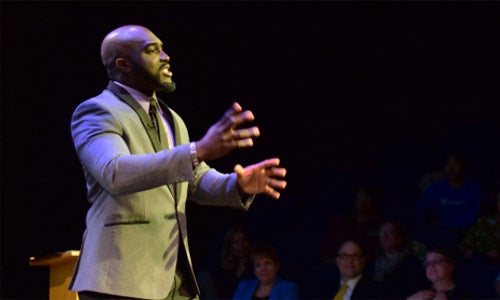
The eye as a window into your pain tolerance
Waterloo vision scientist pitches new method to quantify pain at provincial Three Minute Thesis (3MT) competition

Waterloo vision scientist pitches new method to quantify pain at provincial Three Minute Thesis (3MT) competition
By Monique Bevan Faculty of SciencePhoto credit: iStock/Getty Images Plus/Mark_Kuiken
Have you ever wondered why some people can swim for hours in a cold lake while others don’t last a minute? Everyone has a different tolerance for cold water, in much the same way that everyone processes pain differently.
While an optometrist, Emmanuel Alabi, now a doctoral candidate in Waterloo’s School of Optometry and Vision Science, noticed it’s hard to predict how patients will handle the discomfort of routine medical procedures. That’s why he’s researching how the eye can be used as an objective measure of pain.
The surface of the eye, better known as the cornea, is one of the most densely innervated tissues on the body and is made up of a combination of both sensory and autonomic nerve fibres. The autonomic nervous system (ANS) is the primary control system for the human body, regulating internal functions such as heart rate and arousal. Within the ocular area, the ANS controls pupillary reflexes, focus and blood flow.
When introducing stimuli to the surface of the eye, Alabi observes pupil response and blood flow as factors to measure an individual’s pain tolerance. By characterizing these responses, Alabi and his supervisor, Professor Trefford Simpson, hope to develop objective metrics to quantify how much pain each individual experiences.

Emmanuel Alabi presents his research at the University-level Three Minute Thesis Competition (3MT)
Alabi presented his research at the recent University-level Three Minute Thesis (3MT) competition, taking first prize while winning the People’s Choice Award as well. He will compete in the Ontario 3MT competition being hosted on Wednesday, April 12 at the University of Waterloo.
Last year, Gah-Jone Won, a doctoral candidate in Faculty of Science’s School of Optometry and Vision Science, won the National 3MT Finals. Alabi is the third student from the Faculty of Science to compete at Provincials in the last five years.
Alabi said, “I participated in the 3MT competition to share the research our lab does with the rest of the world; to let everyone know that science is not some abstract thing locked up in a high classified laboratory, but rather part and parcel of our everyday lives from birth through adulthood.”
Alabi hopes his research will be used in other fields by analyzing different areas of the body such as the surface of the skin. By conducting these measurements, medical experts will be able to clearly define patient tolerance instead of using a general self-reporting scale, which varies between individuals. It will also allow medical practitioners to properly predict the tolerance of those who are unable to communicate verbally, such as infants.
Alabi said his passion for researching pain and autonomic responses continues to grow because of the unconditional support of his supervisor.
The Three Minute Thesis was first established in 2008 by the University of Queensland and is now a staple across many universities. It challenges graduate students to describe their research within three minutes to a public audience, using just one visual slide.
Come support Alabi and watch other graduate finalists from across Ontario compete on Wednesday at 10 am at the University of Waterloo CIGI campus.

Read more
Here are the people and events behind some of this year’s most compelling Waterloo stories

Read more
Waterloo researchers have developed a new quantum computing approach that brings science closer to simulating the early universe

Read more
15 University of Waterloo researchers have been named to the annual Highly Cited Researchers™ list for significant contributions to their specific fields of research
The University of Waterloo acknowledges that much of our work takes place on the traditional territory of the Neutral, Anishinaabeg, and Haudenosaunee peoples. Our main campus is situated on the Haldimand Tract, the land granted to the Six Nations that includes six miles on each side of the Grand River. Our active work toward reconciliation takes place across our campuses through research, learning, teaching, and community building, and is co-ordinated within the Office of Indigenous Relations.